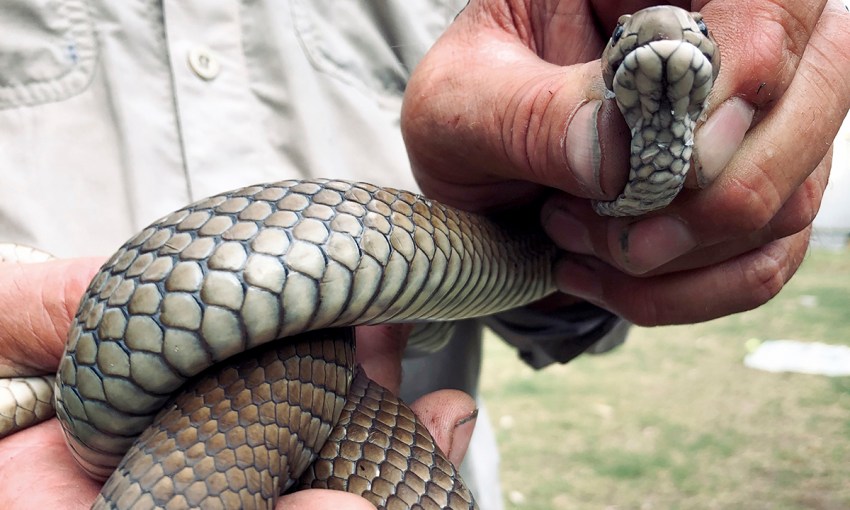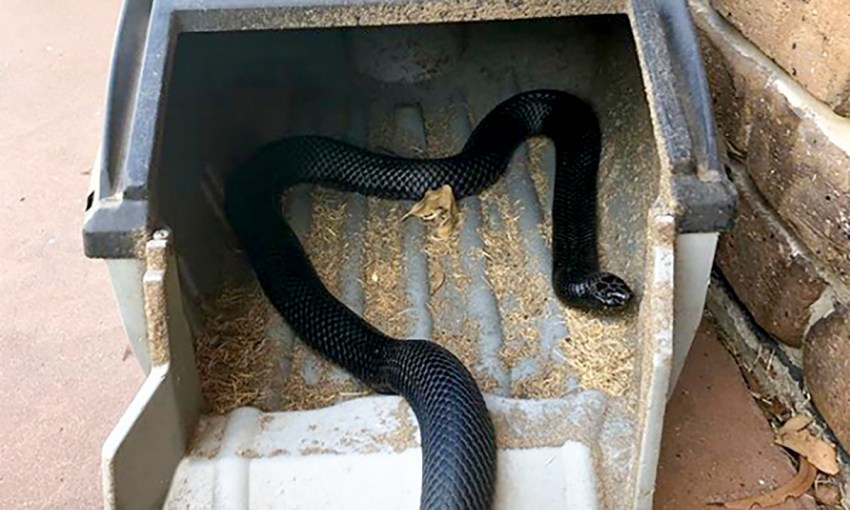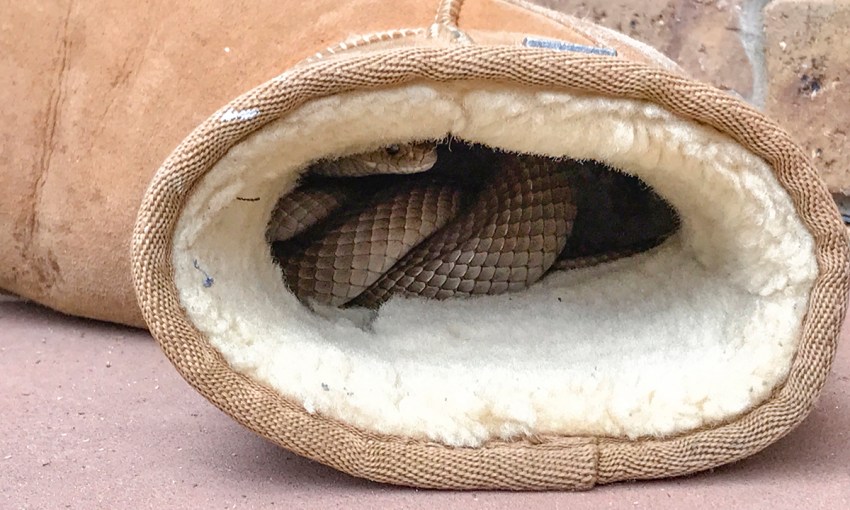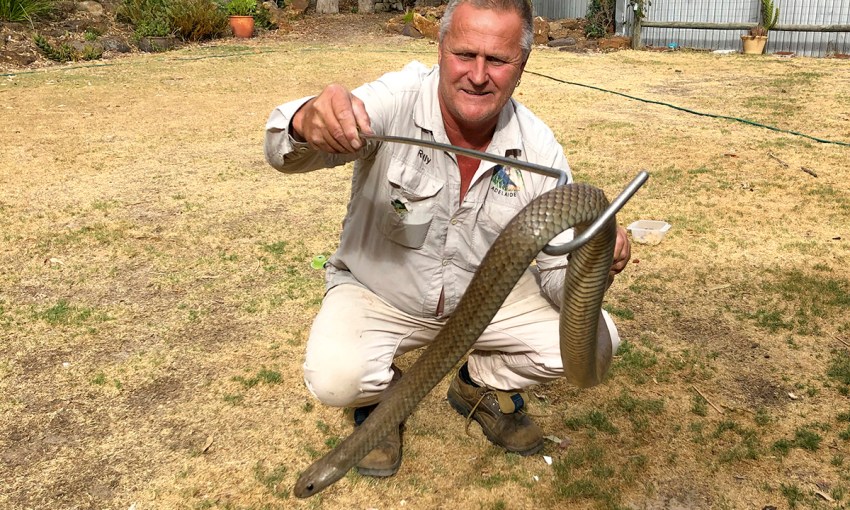Snake wrangler Rolly Burrell shares some tips on what do if you find one of nature’s slippery friends in your garden, and how he found himself in the catching career in the first place.
In the garden: Springing into snake season
Rolly Burrell has been catching snakes for 45 years. “I’d hate to think about how many I’ve caught,” says Rolly. “It would be in the thousands and thousands … Sometimes I catch 800 to 900 a year,” he adds with a laugh.
The reason Rolly catches snakes? For the thrill. “It beats taking drugs,” he says. “You just sort of grab a snake by the tail and they’re quite lethal, so it really gives you a rush.” Rolly has received snake bites many times – as many as 50 or 60 occasions – but not all of these encounters were because of his job.
Rolly migrated from England to South Australia when he was six years old, and as a result of being fascinated with the wildlife in his new home, was “always bringing snakes home”. As Rolly grew older he tried numerous jobs, but always found himself catching snakes after hours. He eventually turned his unique but necessary skill into a fully-fledged career in 1984 by forming his own snake removalist business.

Snake Catchers Adelaide services metropolitan Adelaide, Adelaide Hills and Fleurieu areas – but Rolly has even travelled to Vietnam to remove hundreds of cobras from the Ho Chi Minh Tunnels, and often travels interstate through Western Australia. He is also an ardent animal lover also handles fauna relocation and rehabilitation services.
Rolly says there are many snake species local to South Australia such as the eastern brown snake, the red-bellied black snake and the tiger snake. Most of these snakes won’t kill you, he says, but are highly venomous.
Although Rolly is confident with these creatures, he doesn’t recommend home-owners get too intimate. If a snake is in your back yard or garden, keep your distance, he says. “The best thing to do if you find a snake in your garden, don’t touch the snake and don’t try and kill it,” says Rolly. Instead, keep an eye on the snake and phone a snake catcher.

Rolly is confident that when people go on the offence with a snake, that’s when trouble strikes “Snakes, they’re everywhere today,” says Rolly. “We’ve got them down at Glenelg, beachside, suburbia.” But they’re harmless when handled properly, he says. “They’re terrified of us, so just stay back.”
If people do receive a snake bite, it’s best to stay put and call an ambulance. If one gets inside your home, trap them in a room and put a towel under the door so they can’t escape.
Snakes may find their way into your home when hunting for mice, but mostly stick to outside terrain that aligns with their needs – they’re cold-blooded so they seek out warmth. “When they’re hibernating, snakes pick spots where the sun can hit them every now and again through winter,” says Rolly. Retaining walls that face the sun are usual hide-outs for snakes, as well as watery areas. Red-bellied black snakes like to add pond species to their diet, such as frogs and fish.

This snake catcher says “snake season” (the time of the year when he and his 10 catchers are busiest) is late spring or early autumn. “The hatching comes in at around February, which is our busiest month,” says Rolly, adding that contrary to common belief, snakes will not be present on a scorching-hot day. That’s because, reveals Rolly, “at 34.2 degrees a snake’s blood can boil”. When it gets really hot, snakes often hide underground or they can try and find their way into a home, looking for respite or “air conditioning”.
If a garden is continuously being inundated with snakes, Rolly says there is always a back-up plan. For example, on farms or large properties with a snake problem, he sets down large sheets of corrugated iron onto the grass and before spring rolls around he’ll lift up the sheets and find snakes hibernating underneath. “There’s always a way of doing things,” says Rolly.
After the snake is wrangled, it’s usually relocated to a suitable area that won’t affect surrounding livestock or humans. However, the location has to be reasonably close to where the snake was found, because if it’s too far, Rolly says, they often don’t survive.
Although the experienced snake catcher has been in this line of work for several years, Rolly often has to remind himself that he is also vulnerable. “Being in the industry for so long, you may get that false idea that you’re bullet-proof sometimes,” he says.
“But we’re all at risk.”
This story first appeared in the Spring 2019 issue of SALIFE Gardens and Outdoor Living magazine.



